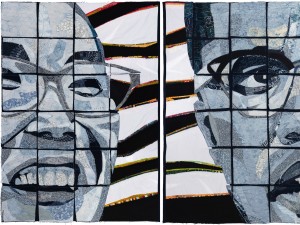Yuri Kochiyama (1921 – 2014) cradled Malcolm X (1925 – 1965) in the moments after he was assassinated on February 21, 1965. Earl Grant’s photo, featured on the cover of Life Magazine, caused people to wonder: Who is this unknown Asian American woman and why did she run to Malcolm X’s aid immediately after he was assassinated?
Yuri was born and raised in California. Her life experiences and the activism that those experiences shaped, shine a light on the contours of white supremacy and how it shapes the lives of people of color. In 1942, like other Japanese American families living on the west coast, hers was forced to relocate to concentration camps. Yuri’s family was held captive for three years in Jerome, Arkansas, under Executive Order 9066. It was in the midst of the war years and in its aftermath that Yuri Kochiyama began her political activism and her lifelong commitment to social justice.
This moment captured in a photo could easily become a passing detail in the history of our struggle for justice. But I believe Yuri’s actions embody the central story. Yuri’s presence at that moment illustrates our most enduring act of resistance: love. Not romantic love, but an expansive love that is grounded in our shared humanity. That love is our most powerful guide as we unfold a vision for society in which everyone belongs. What would it look like if everyone has access to what they need in order to thrive?
In these portraits, I work in fiber collage in order to elevate the beauty of the unfinished, the beauty of possibility. Each free standing “landscape” when placed together forms the contours of the subject’s face.
If we limit ourselves to looking at just one piece, we might miss the possibility of grasping the whole picture. If we limit ourselves to looking at just the easily grasped big picture, we are likely to miss important nuances in plain sight.
To learn more about Yuri Kochiyama you can check out Diane Fujino’s book, Heartbeat of Struggle: The Revolutionary Life of Yuri Kochiyama.

